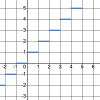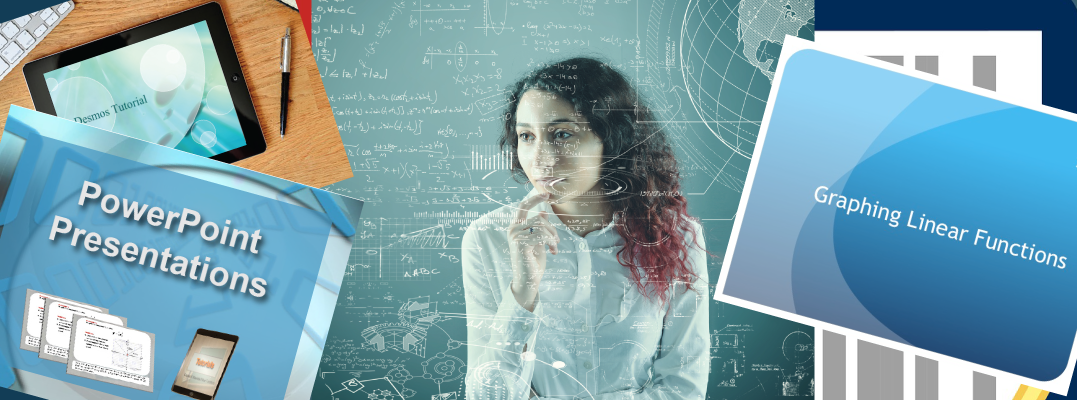Content Showcase: Instructional Resources
Media4Math has an extensive collection of PowerPoint presentations. When you subscribe to Media4Math, you can download these PowerPoints.
This is a growing collection of resources, so keep coming back!
(Want to learn more about our subscription packages? Click here.)
| Title | Thumbnail Image | Description | Curriculum Topics |
|---|---|---|---|
Instructional Resource--Strategy Pack--Percent One Number Is of Another |

|
Instructional Resource | Strategy Pack | The Percent One Number Is of Another Learn different strategies for finding the percent one number is of another. |
Percents |
Instructional Resource: Tutorial: Probability and Playing Cards, Lesson 3: Pocket Aces |

|
Instructional Resource: Tutorial: Probability and Playing Cards, Lesson 3
In this tutorial, learn about the probability of drawing two aces consecutively from a deck of 52 cards. |
Probability |
Instructional Resource: Tutorial: Probability and Playing Cards, Lesson 2 |

|
Instructional Resource: Tutorial: Probability and Playing Cards, Lesson 2
In this tutorial, learn about the probability of drawing a specific card from a deck of 52 cards. |
Probability |
Instructional Resource: Tutorial: Probability and Playing Cards, Lesson 1 |

|
Instructional Resource: Tutorial: Probability and Playing Cards, Lesson 1
In this tutorial, learn about the probability of drawing a specific card from a deck of 52 cards. |
Probability |
Instructional Resource: Tutorial: What Is the Angle Addition Postulate? |

|
Instructional Resource: Tutorial: What Is the Angle Addition Postulate?
In this tutorial, learn what the Angle Addition Postulate is and how to use it to solve problems. |
Applications of Angles and Planes |
Instructional Resource: Tutorial: Geometric Probability |

|
INSTRUCTIONAL RESOURCE: Tutorial: Geometric Probability
This tutorial provides an overview of geometric probability. |
Probability |
Instructional Resource: Tutorial: What Are Piecewise Functions? |

|
Instructional Resource: Tutorial: What Are Piecewise Functions?
In this tutorial students learn about piecewise functions and their properties. —Press PREVIEW to see the tutorial— |
Special Functions |
Instructional Resource: Tutorial: What Are Rational Expressions? |

|
Instructional Resource: Tutorial: What Are Rational Expressions?
In this tutorial students learn about rational expressions and use the properties of fractions to combine them. |
Rational Expressions |
Instructional Resource: Tutorial: What Are Parametric Equations? |

|
Instructional Resource: Tutorial: What Are Parametric Equations?
In this activity explore the properties of parametric equations. |
Applications of Equations and Inequalities and Applications of Quadratic Functions |
Instructional Resource | Using the Unit Circle to Generate Trig Functions (Desmos Activity) |

|
Instructional Resource | Using the Unit Circle to Generate Trig Functions (Desmos)
In this tutorial, learn how to use the unit circle to generate trigonometric functions. |
Trigonometric Functions |
Instructional Resource | Using the Point-Slope Form in Calculus (Desmos Activity) |

|
Instructional Resource | Using the Point-Slope Form in Calculus
In this tutorial, learn how to use the point-slope form to find the equation of the line tangent to a function at a given point. |
Calculus Vocabulary |
Instructional Resource--Fibonacci Sequence, Lesson 6 |

|
Instructional Resource | Fibonacci Sequence, Lesson 6
This is a continuation of our exploration of the Fibonacci Sequence. In this lesson we look at geometric constructions that reflect the golden ratio. |
Sequences, Geometric Constructions with Triangles and Applications of Quadrilaterals |
Instructional Resource--Fibonacci Sequence, Lesson 5 |

|
Instructional Resource | Fibonacci Sequence, Lesson 5
This is a continuation of our exploration of the Fibonacci Sequence. In this lesson we look at the Golden Ratio phi. |
Sequences, Ratios and Rates and Proportions |
Instructional Resource--Fibonacci Sequence, Lesson 4 |

|
Instructional Resource | Fibonacci Sequence, Lesson 4
This is a continuation of our exploration of the Fibonacci Sequence. In this lesson we look at the Golden Ratio phi. |
Sequences, Ratios and Rates and Proportions |
Instructional Resource--Calculating Net Worth |

|
Instructional Resource | Calculating Net Worth
This tutorial goes over the definition of net worth and how to calculate it. |
Numerical Expressions |
Instructional Resource--Segmented Bar Graphs |

|
Instructional Resource | Constructing a Segmented Bar Graph
This tutorial goes over the construction of a segmented bar graph, along with how it differs from other chart types. |
Data Analysis |
Instructional Resource--Symmetries of the Alphabet |

|
Instructional Resource | Symmetries of the Alphabet | Applications of Transformations |
Instructional Resource--Fibonacci Sequence, Lesson 3 |

|
Instructional Resource | Fibonacci Sequence, Lesson 3
This is a continuation of our exploration of the Fibonacci Sequence. In this lesson we look at the sequence as a logarithmic spiral. |
Exploring Coordinate Systems and Applications of Exponential and Logarithmic Functions |
Instructional Resource--Strategy Pack--The Number That Is a Given Percent of Another Number |

|
Instructional Resource | Strategy Pack | The Number Whose Percent Is Another Number
Learn different strategies for finding the number that is a given percentage of another number. |
Percents |
Instructional Resource--Strategy Pack--Percent of a Number |

|
Instructional Resource | Strategy Pack | Percent of a Number
Learn different strategies for finding the percent of a number. |
Percents |
Instructional Resource--Strategy Pack--Comparing Fractions |

|
Instructional Resource | Strategy Pack | Comparing Fractions
Learn different strategies for comparing fractions. |
Compare and Order Fractions |
Instructional Resource--Strategy Pack--One-Step Multiplication Equations |

|
Instructional Resource | Strategy Pack | One-Step Multiplication Equations
Learn different strategies for solving one-step multiplication equations. |
Solving One-Step Equations |
Instructional Resource--Strategy Pack--One-Step Addition Equations |

|
Instructional Resource | Strategy Pack | One-Step Addition Equations
Learn different strategies for solving one-step addition equations. |
Solving One-Step Equations |
Instructional Resource--Geometric Construction--Constructing an Egg Shape |

|
Instructional Resource | Geometric Construction | An Egg Shape
In this instructional resource, we show the steps in constructing an egg shape. |
Geometric Constructions with Circles |
Instructional Resource--Fibonacci Sequence, Lesson 2 |

|
Instructional Resource | Fibonacci Sequence, Lesson 2
This is a continuation of our exploration of the Fibonacci Sequence. In this lesson we look at the sequence as an example of a recursive function. |
Sequences |
